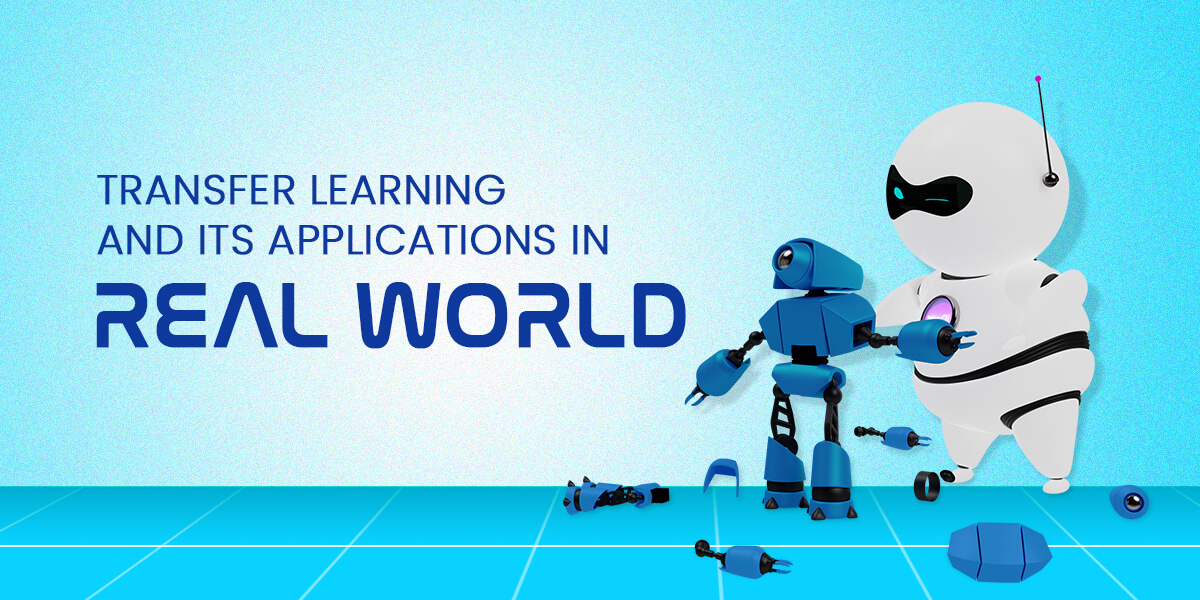The use of machine learning and deep learning models has made a tremendous impact in the world of artificial general intelligence. However, there are huge data and time requirements for completing deep learning projects. Machine learning and deep learning models offer predictive and intelligent solutions. But training and labelling the models required a lot of time. In order to overcome the limitations of deep learning models, a novel approach called ‘Transfer Learning’ has evolved.
Transfer Learning is an advanced form of machine learning. It is much smarter and more effective compared to conventional machine learning.
What is transfer learning?
Going back into the past . . .
Go back to those days when you were learning to ride a bicycle for the very first time. You learned how to:
- balance yourself on the cycle when riding
- apply the brakes
- steer the bicycle in the direction that you want
Coming back into the present . . .
If you want to learn how to ride a motorbike, you won’t be required to learn everything from scratch. You already know the balancing part and how to apply the brakes.
Even though you are in a completely new setting, you can transfer the previous learnings or skills that you learned while riding the bicycle.
Human beings can transfer their acquired knowledge or skills from one topic to another related topic. Similarly, data scientists too can transfer the insights from one machine learning task to another through the use of transfer learning.
Transfer learning is a powerful machine learning technique that involves storage of knowledge that is acquired while solving one problem, and using the same knowledge to solve another related problem.
If a task has already been learned previously, it becomes easy to apply the learnings to a different but related problem.
Traditional machine learning vs Transfer learning
Traditional machine learning
- The algorithm functions in isolation and without storage of knowledge.
- For deep learning models to perform a task effectively, a large enough dataset is needed.
- The model cannot solve a new problem, as a second dataset would be needed.
Transfer learning
- The algorithm can store knowledge and retrieve it.
- The learning of a new task is dependent on a task that is learned previously.
- The model is general instead of specific.
Benefits of transfer learning
- Processing is faster and more accurate.
- Training the models requires less data.
- Learning rate is higher.
- Transfer of algorithmic logic from one model to another is possible.
- Pre-trained models enable algorithms to learn new tasks.
- Algorithms are able to generate faster and quality results.
Real world applications of transfer learning
Here is how transfer learning is being used as a part of many deep learning projects.
Image recognition
Transfer learning can be effectively used for carrying out image recognition tasks.
For example, using transfer learning, a model that is pre-trained for identifying dogs can be used to identify cats.
Image classification
- Neural networks are trained on large datasets of images to recognize objects.
- However, this training and the use of huge datasets is a time-consuming process and a tedious one too.
- The use of transfer learning can save valuable time by pre-training the model using ImageNet that contains millions of images belonging to different categories.
- Image classification using transfer learning can be seen in the medical imaging field. Here, the convolutional neural network (model) is trained using ImageNet to identify kidney problems in ultrasound images.
- Also, a model that is trained using images from MRI scans can be effectively used as the primary model for analyzing CT scans.
Gaming
- The adoption of artificial general intelligence has given a completely new dimension to the gaming industry.
- AlphaGo, the first computer neural network program developed by DeepMind Technologies, had successfully defeated a professional Go player.
- AlphaGo is an expert at playing Go. However, when asked to play other games, it fails
- The algorithm of AlphaGo is only trained to play Go.
- If AlphaGo has to play other games, it needs to learn new algorithms and techniques of the new game.
- The use of transfer learning in gaming makes it possible for the tactics learned in a previous game to be applied to another related game.
- Also, it is possible to transfer the knowledge of AlphaGo to other games, rather than wasting time developing new models from square one.
Sentiment analysis
- The use of sentiment analysis by businesses helps them to understand the sentiments of customers much better.
- Using transfer learning, the deep learning models are trained on understanding the emotions of customers when they post something on Twitter or any other social media channel.
Spam filtering
Deep learning models trained for categorizing emails can be used for filtering spam mails.
Transfer learning helps take the benefit of pre-trained datasets for deep learning models. It is being used in numerous deep learning projects. Andrew Ng, the famous Artificial Intelligence guru, described transfer learning as the next driver of ML success.

